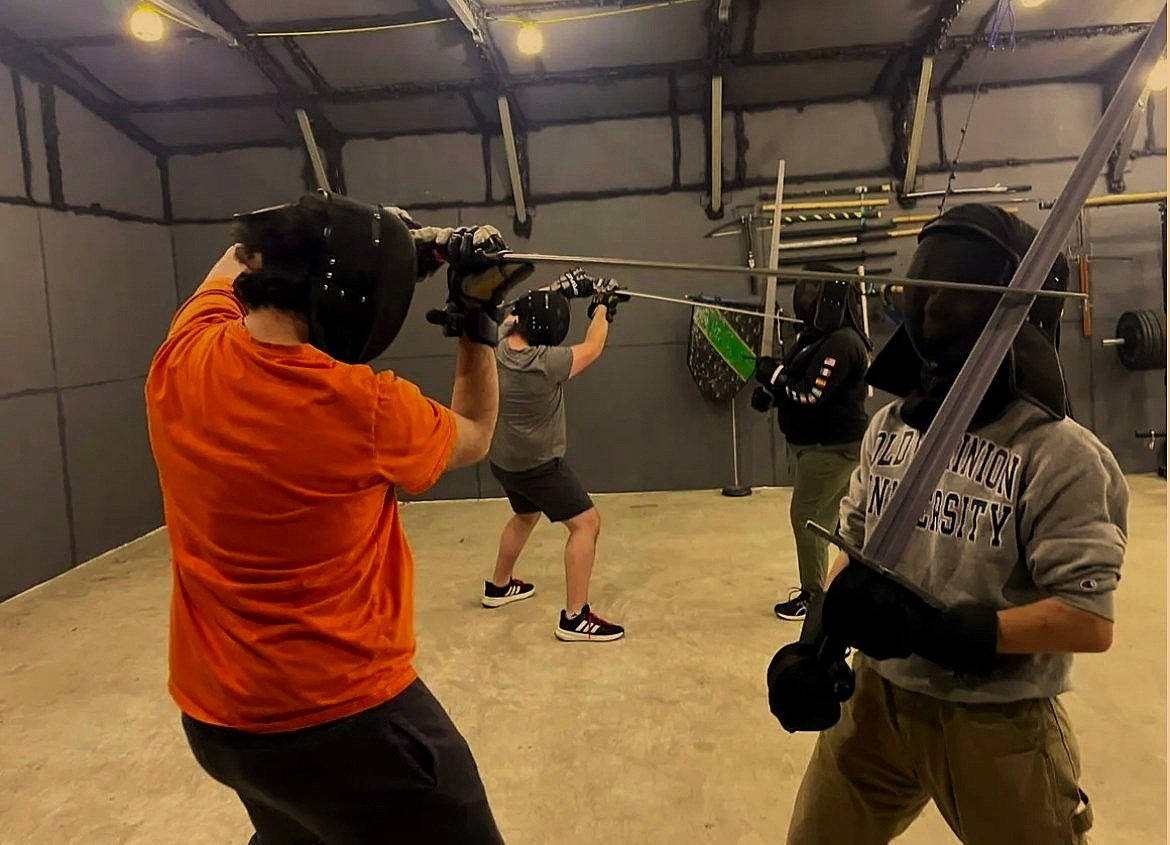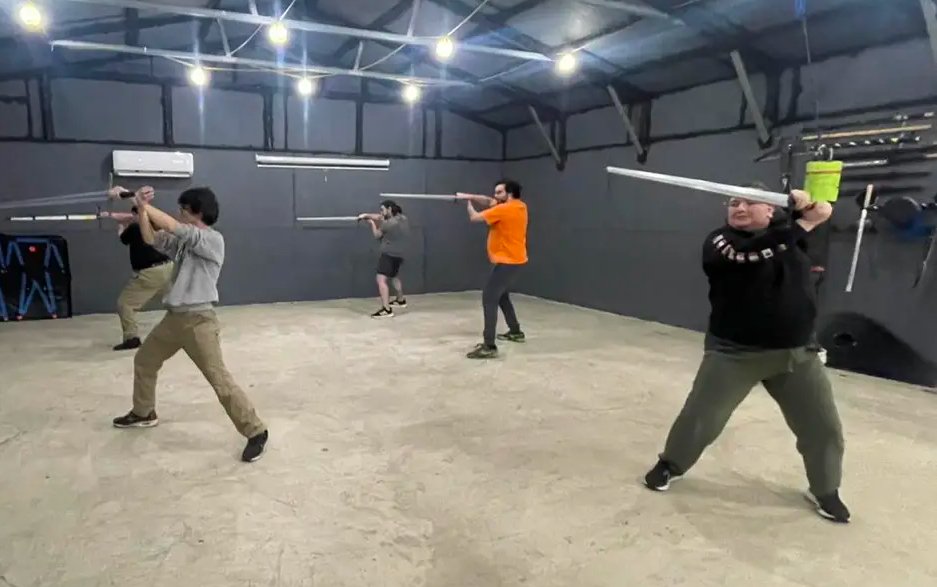
OUR LONGSWORD CLASSES
Fridays at 7:30PM-8:30PM
Our longsword classes are a great way to get into the HEMA world. As one of the most popular sports within HEMA, there is a wealth of information, communities, and competitions that you can enjoy as a longsword practitioner. We teach our longsword classes from primarily the German Liechtenauer sources but are not opposed to pull from other systems as well. Like all of our classes, you can be an experienced fencer or brand new to the sport and feel like you belong. There is a wide range of topics we cover from the basics (footwork, stances, movement) to the advanced (timing, programming).
Feel free to reach out about our classes at any time if you have questions! Visit our GEAR GUIDE page to see what equipment you need to get started!
GALLERY













THE LONGSWORD
Possibly the most noticeable icon of the Medieval European Knight is the longsword. The term “Longsword” is used to describe a wide variety of swords that existed throughout Europe from roughly 1100-1700 AD. It is typically a hand-and-a-half to two-handed, double edged sword that could range in length from 35-43 inches on average (blade). Most had an elongated cross guard to protect the user’s body and hands. Many countries produced and used longswords for their professional soldiers/knights and as such, techniques and standardized fighting techniques were developed over the years.
LONGSWORD MYTHS
Despite what some might think, longswords are surprisingly nimble and agile weapons. The old myth that they were just “metal clubs” used by knights to bash their way through battles is only perpetuated by those who’ve never held a real longsword. Typically weighing between 2.4 and 4.0 lbs, they handle much like any finely crafted two-handed sword. Masters of the longsword were known for their speed, precision, and ability to target vulnerable gaps in armor or clothing, focusing on skillful strikes rather than brute force.
Unlike many Eastern martial arts traditions, such as the Japanese Koryu systems, much of the historical documentation on longsword training has been lost over time. However, fragments of fencing manuals have surfaced, and practitioners of Historical European Martial Arts (HEMA) continue to study and decipher these teachings. One of the earliest known texts comes from the German fencing master Johannes Liechtenauer (1300-1389). Later, Italian fencing master Fiore dei Liberi (1350-1409) produced his own manuals, which both expanded upon and sometimes contradicted Liechtenauer’s methods. As with any weapon-based combat system, longsword fighting is a tactical discipline that demands athleticism, the ability to anticipate an opponent's moves, and careful strategy. Many techniques from these ancient texts are still practiced today, often tested in modern sparring sessions. Longsword remains one of the most popular HEMA disciplines, consistently drawing the largest number of participants.



